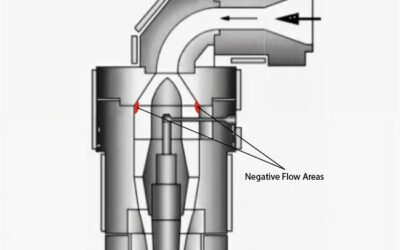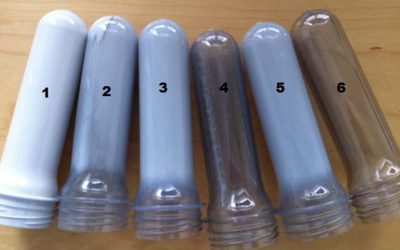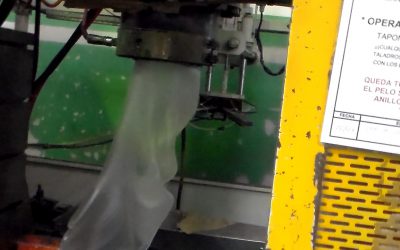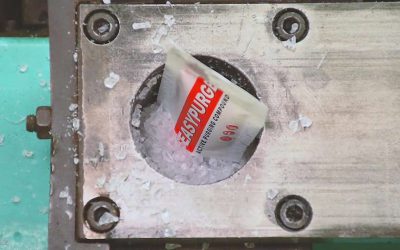One of the most common queries we receive, especially from customers in the Automotive industry, is how to carry out safe changes of materials that have very different processing temperatures on injection molding machines.
In this article, we will explore the case of switching from POM (180ºC) to PA (280ºC) or vice versa: it is important to keep in mind that any trace of POM or PA, depending on the change, can generate black specks or streaks in the finished part.
Changes of Materials and the Importance of Experience in the Field
Experience plays a fundamental role when facing these types of challenges.
Most of the problems that arise in the field of material changes respond to a wide variety of variables, so having the support of experienced technicians is key to finding effective solutions.
Below, we will explain in detail how to proceed in these situations.
Some initial thoughts
As a general rule, we should carry out changes of materials at the temperature of the material we are processing.
For example, if we switch from POM to PA, we should make the change at 180ºC, but at that temperature PA could not be processed.
If we change from PA to POM, even if we lowered the temperature to 240ºC, POM would degrade immediately.
Additionally, any trace, no matter how small, of POM or PA would generate black dots or streaks.
Changes of Materials: Use of a Bridging Material and a Purging Compound
In order to carry out these changes of materials safely, it’s recommended to use a bridging material that is stable at both temperatures, and a good purging compound to ensure complete removal of the material being changed. If you use a pelleted purge, you should opt for a grade that will withstand both temperatures. If you choose a concentrated liquid purge, PP or HDPE can be used as bridging materials. Both are a good and valid solution, the latter being probably much more cost effective.
Procedures for changes of materials having very different temperature requirements
POM to PA procedure:
- At POM’s working temperature, purge using the bridging material plus the purge.
- Once POM is completely removed, raise the machine’s temperature to PA’s working temperature.
- Displace the bridging material with PA.
PA to POM procedure:
- At PA’s working temperature, purge using the bridging material plus the purge.
- Once PA is completely removed, raise the machine’s temperature to POM’s working temperature.
- Displace the bridging material with POM.
To summarize, carrying out material changes with very different temperature requirements can be a challenge.
Nevertheless, if you follow a proper procedure and use appropriate bridging materials and purging compounds, it can be accomplished safely and efficiently. Having the expertise of senior technicians in the industry is invaluable in meeting these challenges and finding effective solutions.
Always remember to follow established recommendations and procedures to ensure the quality of finished parts.








